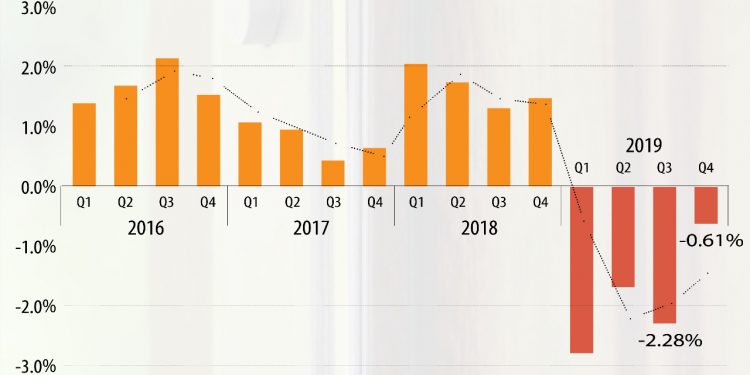A weakening Kenyan economy continues to show its ugly face in the form of declining property prices.
The latest Kenya Bankers Association House Price Index(KBA-HPI), shows that house prices between in Quarter September and December, 2019 fell by 0.61 per cent from a decline of 2.28 per cent in the previous quarter.
The Association attributes this fall in prices to a poorly performing economy, which took out huge chunks of disposable income from potential home owners.
While apartments retained dominance as a preferred choice for many property buyers, its market share fell from 85 percent to 74 percent.

KBA attributes the slowdown in house prices in the last quarter of last year to an overall slowdown in the performance of the economy, which in turn tightened disposable income growth among potential home buyers.
The HPI further associates the sustained decline in prices to an elevated level of non- performing loans in the real estate and the construction sector, which has further contributed to the prices slump by constricting private sector growth.
READ ALSO: Housing Finance auctions high end properties to recover funds
In addition, the findings show that a rising distressed properties overhang continues to have a bearing on house prices, shaping market expectations and causing dealers to align by reducing their asking prices.
“This negative feedback loop has clouded the house market outlook and led to price rediscovery in favor of a downward correction,’’ said KBA Director of Research and Policy on Financial Markets Mr. Jared Osoro, observing a sustained five-year market correction albeit with modest price increases.
In the last quarter of 2019, preference for maisonettes rose from 10 percent in the past quarter to 17 percent, with bungalows registering a preference rate of 9 percent.
Overall, homes with more bedrooms, bathrooms and plinth areas attracted higher prices. On the other hand, buyers preferred low-density buildings.
KBA-HPI provides policy makers and investors with a bird’s eye view of trends in the real estate sector. Since its establishment 5 years ago, this KBA housing index has quickly become a credible tool for tracking housing prices and movements.
The Association mentions that the housing market remained depressed with prices being in the negative territory for 4 consecutive quarters to the end of 2019. The outlined evolution of house prices evidently points to a market correction that follows sustained but modest price increases that had been seen over the past 5 years.
The recent trend in changes in house prices is in line with the softening of the economy and is a manifestation of the interplay between weak demand driven by the tepid disposable income growth and supply-side conditions.
This is on the back of the elevated real estate and construction sector Non-Performing Loans (NPLs) feeding into constrained credit growth to the sector.
At the top end of the market, this report mentions that there has been a run for apartments with the activity in the upmarket and middle-income markets muted as price correction trend continues.
Whereas apartments dominated the market its market share declined by 11 percent from 85 percent in quarter three to 74 percent during quarter four of 2019.
The share of Maisonettes bottomed out by 7 percent from 10 percent during quarter three to 17 percent during quarter four. On the other hand, the share of bungalows was subdued at 9 percent.
The KBA property bulletin mentions that with a depressed property market conditions sustained in the whole of 2019, buyers are unwilling or unable to pay the current asking prices, pushing sellers to drop prices.
This negative feedback loop has thus clouded the housing market outlook and led to price rediscovery in favour of a downward correction.
RELATED
Affordable Housing Program Attracts 17,000 Kenyans so Far




